- Joined
- Dec 19, 2014
- Messages
- 3,811
Alright folks, after the 60:60 vs. “Ideal” MRB proportions topic has emerged on multiple occasions in recent PS discussions, it is finally time for the topic to have a thread of its own!
I am certain that many members of the forum and members of the trade have much more experience and can provide much more insight that me, so I am looking forward to comment from others! (looking at you @Rockdiamond) Nonetheless, I shall begin with my personal experience and observations.
It is no secret that when it comes to MRB proportions, the majority of PS’ population will favor the so-called “Ideal” proportions. Such proportions are usually limited to the below:
Table: 54-58
Depth: 60-62.4 (although my personal preference is <62)
Crown angle: 34-35.0
Pavilion angle: 40.6-40.9 (41.0 if the crown angle is close to 34)
Why? Said proportions usually result in an excellent cut that will produce great light performance, which is the main reason we all love diamonds! Now, we know that in addition to the diamond’s specs, we also like to evaluate HCA score, ASET, Ideal scope and H&A images, which help us evaluate diamond’s performance & symmetry. When new members come in looking for advice, we* (*most of us) will always recommend ideal proportions for GIA stones and further even recommend AGS000 certified stones with Ideal light performance. More often than not, even if stones with proportions outside of the ideal parameters (assuming HCA <2, for example) have the potential to perform exceptionally, such stones will be rejected by the majority of all PS members. Are we all biased? Or can the average consumer really see the difference between “ideal” proportions and stones with potential which have specs outside of the recommended range. Can cut for MRB be standardized, or can we accepts a different “ideal”?
To this day, we continue to hear from time to time about some of the great 60:60 diamonds. I know, I know…”but that was before Ideal H&A…cutting has improved…tables greater than 59% are not as appealing…such diamonds demonstrate more brilliance than fire..” the list goes on. But one feature of 60:60 stones cannot be disputed – they do provide an amazing spread! Much greater than a diamond of same carat with depth of 62%. So I guess the question is – should 60:60 stones really be ignored? What if there were 60:60 stones with ideal light performance, would you still choose the above mentioned “ideal” parameters?
Well, my friends, I would like to share with you what in my opinion is an example of a great 60:60 stone!
A little bit of back story (If you don’t want to read through this, feel free to skip to the images), when my husband and I got engaged, we acquired an heirloom ring which had a chipped diamond. I loved color diamonds prior, but this was when I started learning more about round cuts and when I found PS (I was in lurker status for a while J ). PS helped me discover recutting options. My sole goal for the recutting process was to hopefully repair the chip that ran from the pavilion to the culet, but little did I know that the results would be so amazing. Mr. Brian Gavin recut my damaged stone and in order to salvage the majority of the diamond without sacrificing too much of the diameter, he transformed it into an H&A 60:60 diamond with ideal light performance! For your viewing pleasure, please see ASET, Idealscope, H&A image and AGS certificate below:
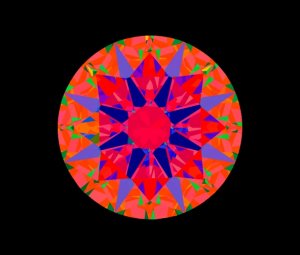
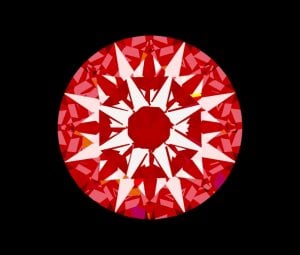
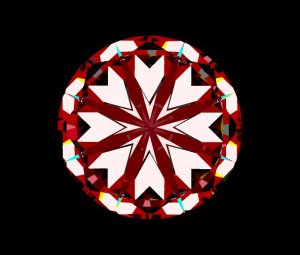
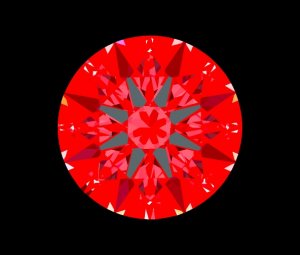
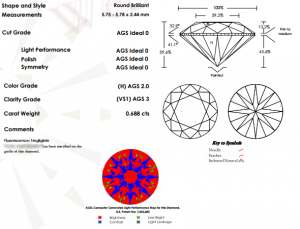
This little number was a real firecracker! Despite its shallow crown angle, it exhibited fantastic fire, I would absolutely say that it was comparable to the 3 stones I later acquired/upgraded that had “Ideal” proportions. The 59.6% depth made it appear equal in size to 0.72ct or so stones with ideal proportions. That was some major difference!
I am certain that the majority of folks here will continue to favor the before established “Ideal” proportions, but are we missing on some major coverage for ignoring 60:60 stones? Should we leave them in the past, or are we missing on some untapped 60:60 Ideal Cut diamond potential?
For those that made it through the entire, or 1/2, or 1/3 of the post – thank you Looking forward to hearing others’ opinions!
Looking forward to hearing others’ opinions!
I am certain that many members of the forum and members of the trade have much more experience and can provide much more insight that me, so I am looking forward to comment from others! (looking at you @Rockdiamond) Nonetheless, I shall begin with my personal experience and observations.
It is no secret that when it comes to MRB proportions, the majority of PS’ population will favor the so-called “Ideal” proportions. Such proportions are usually limited to the below:
Table: 54-58
Depth: 60-62.4 (although my personal preference is <62)
Crown angle: 34-35.0
Pavilion angle: 40.6-40.9 (41.0 if the crown angle is close to 34)
Why? Said proportions usually result in an excellent cut that will produce great light performance, which is the main reason we all love diamonds! Now, we know that in addition to the diamond’s specs, we also like to evaluate HCA score, ASET, Ideal scope and H&A images, which help us evaluate diamond’s performance & symmetry. When new members come in looking for advice, we* (*most of us) will always recommend ideal proportions for GIA stones and further even recommend AGS000 certified stones with Ideal light performance. More often than not, even if stones with proportions outside of the ideal parameters (assuming HCA <2, for example) have the potential to perform exceptionally, such stones will be rejected by the majority of all PS members. Are we all biased? Or can the average consumer really see the difference between “ideal” proportions and stones with potential which have specs outside of the recommended range. Can cut for MRB be standardized, or can we accepts a different “ideal”?
To this day, we continue to hear from time to time about some of the great 60:60 diamonds. I know, I know…”but that was before Ideal H&A…cutting has improved…tables greater than 59% are not as appealing…such diamonds demonstrate more brilliance than fire..” the list goes on. But one feature of 60:60 stones cannot be disputed – they do provide an amazing spread! Much greater than a diamond of same carat with depth of 62%. So I guess the question is – should 60:60 stones really be ignored? What if there were 60:60 stones with ideal light performance, would you still choose the above mentioned “ideal” parameters?
Well, my friends, I would like to share with you what in my opinion is an example of a great 60:60 stone!
A little bit of back story (If you don’t want to read through this, feel free to skip to the images), when my husband and I got engaged, we acquired an heirloom ring which had a chipped diamond. I loved color diamonds prior, but this was when I started learning more about round cuts and when I found PS (I was in lurker status for a while J ). PS helped me discover recutting options. My sole goal for the recutting process was to hopefully repair the chip that ran from the pavilion to the culet, but little did I know that the results would be so amazing. Mr. Brian Gavin recut my damaged stone and in order to salvage the majority of the diamond without sacrificing too much of the diameter, he transformed it into an H&A 60:60 diamond with ideal light performance! For your viewing pleasure, please see ASET, Idealscope, H&A image and AGS certificate below:





This little number was a real firecracker! Despite its shallow crown angle, it exhibited fantastic fire, I would absolutely say that it was comparable to the 3 stones I later acquired/upgraded that had “Ideal” proportions. The 59.6% depth made it appear equal in size to 0.72ct or so stones with ideal proportions. That was some major difference!
I am certain that the majority of folks here will continue to favor the before established “Ideal” proportions, but are we missing on some major coverage for ignoring 60:60 stones? Should we leave them in the past, or are we missing on some untapped 60:60 Ideal Cut diamond potential?
For those that made it through the entire, or 1/2, or 1/3 of the post – thank you
Last edited:





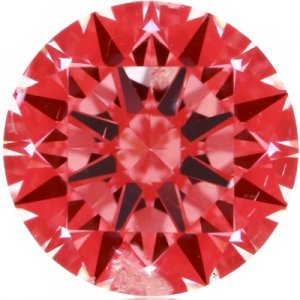


300x240.png)